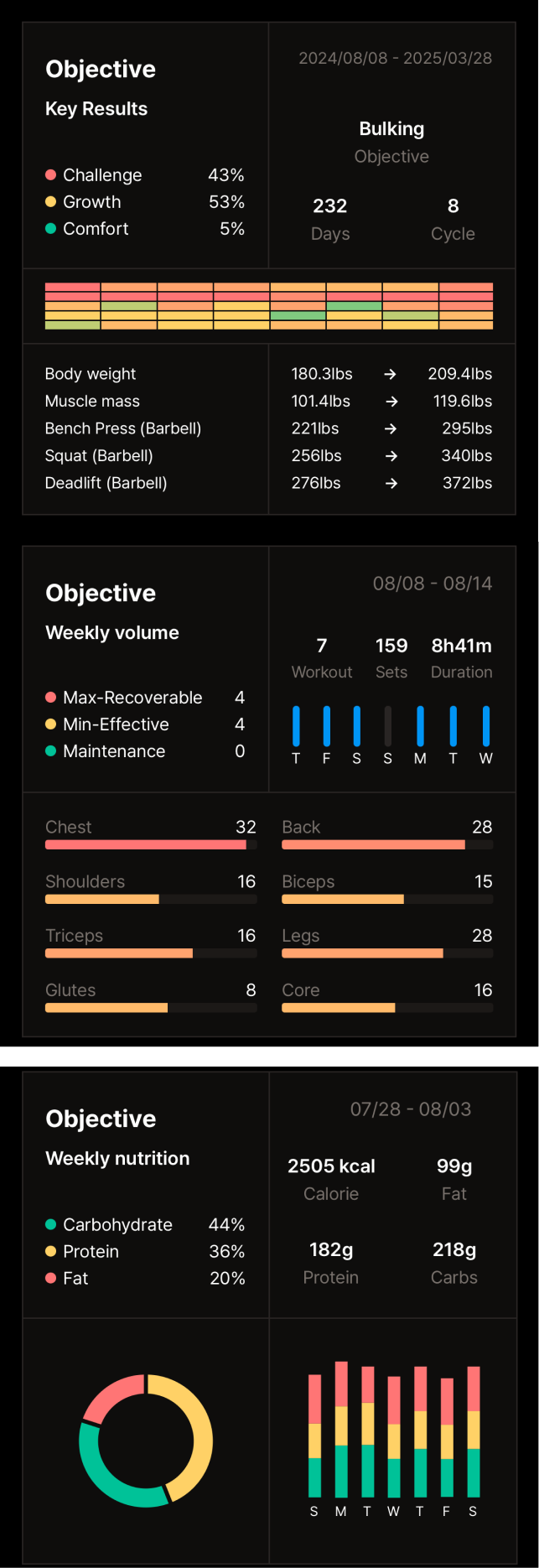Strength vs. Hypertrophy vs. Endurance
Imagine you're standing in the gym, surrounded by equipment, and ready to start your workout. You see people lifting heavy weights, others focusing on higher repetitions, and some hitting the treadmill for a long run. Which path is right for you? Understanding the differences between strength training, hypertrophy training, and endurance training is crucial for achieving your specific fitness goals. This blog post will explore these distinct training types to help you choose the best approach for your needs. What if you could tailor your workout to meet your exact fitness aspirations?
1. Understanding Training Goals: Strength, Hypertrophy, and Endurance
Defining Strength Training
Strength training aims to increase your muscles' ability to generate force. This means lifting heavier weights for fewer repetitions. Typical strength training exercises include squats, deadlifts, bench presses, and overhead presses. Rep schemes often involve 1-5 repetitions with long rest periods between sets. Strength training offers benefits beyond increased muscle power, including improved bone density and a boosted metabolism. It's the foundation for many athletic endeavors and everyday activities.
Exploring Hypertrophy Training
Hypertrophy training focuses on increasing muscle size. This is the type of training favored by bodybuilders. Hypertrophy is achieved through moderate repetitions (typically 8-12) with moderate weight. This approach stimulates muscle growth and contributes to a more defined physique. The benefits of hypertrophy training extend beyond aesthetics, contributing to overall strength gains and improved metabolic function. 
Endurance Training Explained
Endurance training emphasizes improving stamina and cardiovascular health. This type of training involves sustained activity like running, cycling, swimming, or even high-repetition weightlifting. Endurance workouts typically involve longer durations or higher repetitions with lighter weights. The benefits of endurance training include improved heart health, increased lung capacity, and higher energy levels. 
2. Key Differences Between Strength, Hypertrophy, and Endurance
Comparing Rep Schemes and Volume
The primary difference between these training types lies in the rep schemes, sets, and weight used. A simple chart illustrates these distinctions:
| Training Type | Reps | Sets | Weight | |---|---|---|---| | Strength | 1-5 | 3-5 | Heavy (80-95% 1RM) | | Hypertrophy | 8-12 | 3-4 | Moderate (65-85% 1RM) | | Endurance | 15+ | 2-3 | Light (40-65% 1RM) |
1RM refers to your "one-rep max," the maximum weight you can lift for a single repetition. These varying rep ranges and weights target different muscle fibers and energy systems, leading to distinct adaptations.
Energy Systems and Adaptations
Each training type primarily utilizes a specific energy system. Strength training relies on the ATP-PC (phosphagen) system, which provides short bursts of energy. Hypertrophy training utilizes both the ATP-PC and glycolytic (anaerobic) systems, allowing for slightly longer durations of activity. Endurance training primarily uses the oxidative (aerobic) system, which fuels sustained activity. Over time, your body adapts to these different energy demands, resulting in specific physiological changes.
Practical Applications and Considerations
Choosing the right training type depends on your individual goals. Strength training is ideal for athletes requiring maximal force production, like powerlifters or football players. Hypertrophy training is beneficial for those seeking increased muscle mass and definition, such as bodybuilders. Endurance training is crucial for athletes participating in endurance sports like marathons or triathlons. Consider your time commitment, recovery needs, and personal preferences when selecting your training path.
3. Creating a Balanced Workout Plan
Combining Strength and Hypertrophy
A balanced workout plan can incorporate both strength and hypertrophy training. A sample plan might involve heavy compound lifts (like squats and deadlifts) for strength, followed by accessory exercises (like bicep curls and triceps extensions) for hypertrophy. Periodization, varying the intensity and volume of your training over time, is crucial for maximizing results and preventing plateaus. Adequate recovery is equally important for muscle growth and repair. 
Integrating Endurance with Strength
Integrating endurance training into a strength-focused routine can enhance cardiovascular health and overall fitness. Strategies include adding short bursts of high-intensity interval training (HIIT) or incorporating low-impact steady-state cardio like cycling or swimming. Managing fatigue and recovery is essential when combining different training types. Listen to your body and adjust your training volume as needed.
Tailoring Your Plan to Fit Individual Goals
Beginners should start with a balanced plan that incorporates elements of strength, hypertrophy, and endurance to build a solid foundation. As you progress, you can tailor your plan to prioritize specific goals. Intermediate fitness enthusiasts seeking specialization can adjust their training volume, intensity, and exercise selection to focus on either strength, hypertrophy, or endurance.
4. Common Misconceptions and FAQs
Debunking Myths About Muscle Building and Cardio
A common fear is that cardio will hinder muscle growth. Research shows that moderate cardio can actually enhance recovery and improve overall cardiovascular health without negatively impacting muscle gains. Similarly, some believe that higher repetitions won't build strength. While lower repetitions are optimal for maximal strength, higher repetitions can still contribute to strength gains, especially in beginners.
Frequently Asked Questions
Is it possible to gain strength while training for endurance? Yes, it's possible to gain strength while focusing on endurance, particularly through compound exercises and incorporating strength training sessions into your routine.
How to prevent burnout when combining different training types? Proper planning, adequate rest, and listening to your body are crucial. Periodization and incorporating deload weeks can help prevent overtraining and burnout.
Conclusion
Strength, hypertrophy, and endurance training each offer unique benefits and applications. Strength training maximizes force production, hypertrophy training increases muscle size, and endurance training improves stamina and cardiovascular health. Consider your personal goals, lifestyle, and preferences when choosing a training path. Explore related topics like nutrition for muscle gain or recovery techniques for endurance athletes to further optimize your fitness journey. By understanding these training principles, you can create a workout plan that effectively helps you reach your fitness aspirations.

